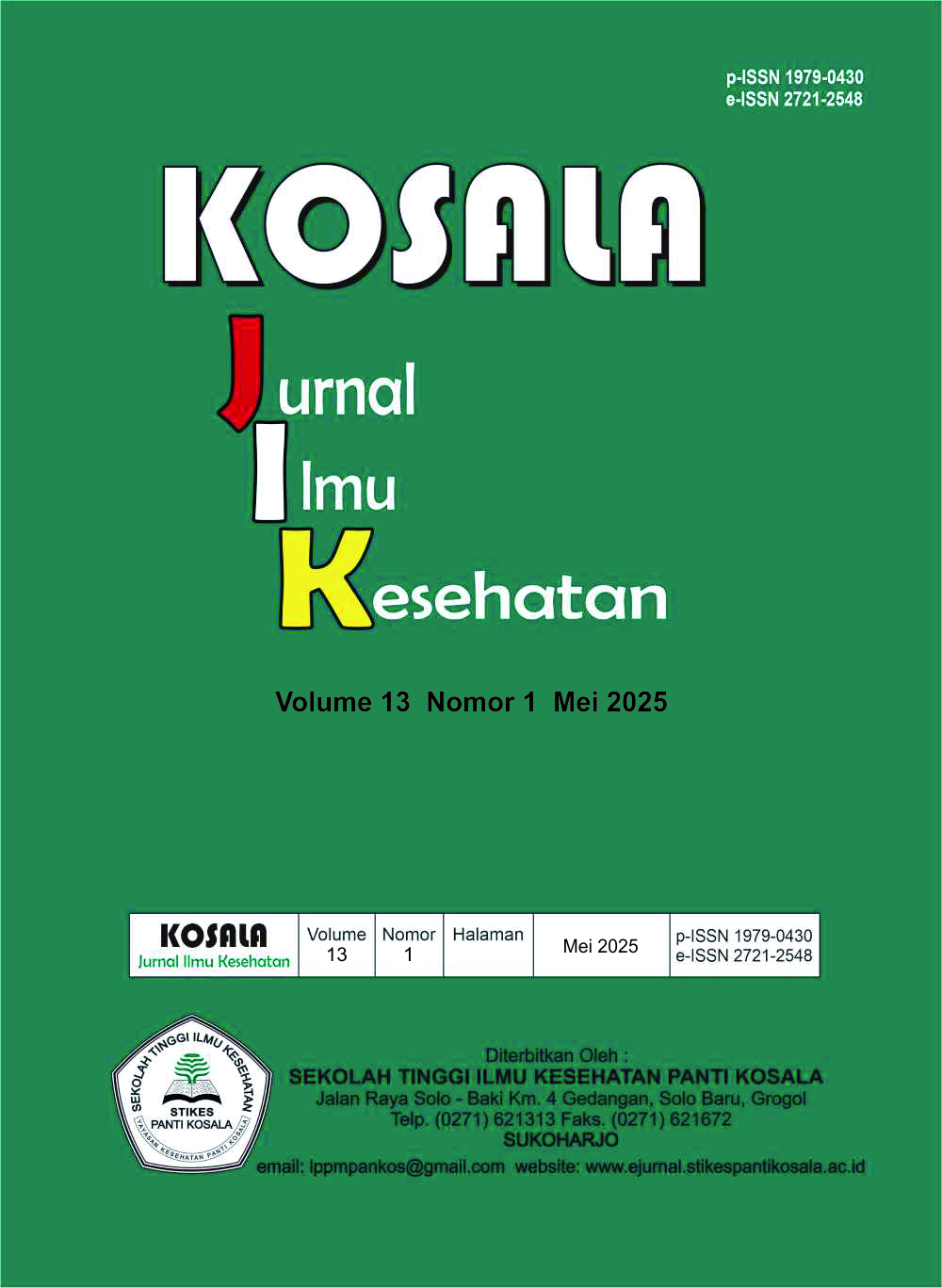PERBEDAAN PENGETAHUAN IBU HAMIL TRIMESTER III TENTANG SKRINING HIPOTIROID KONGENITAL SEBELUM DAN SETELAH DIBERIKAN PENYULUHAN DENGAN MEDIA VIDEO
Main Article Content
Abstract
Kekurangan hormon pada bayi sejak lahir dapat mengakibatkan gangguan pertumbuhan, perkembangan dan keterbelakangan mental. Diketahui sebagian besar ibu hamil belum mengetahui mengenai skrining hipotiroid kongenital. Upaya peningkatan pengetahuan mengenai skrining hipotiroid kongenital melalui penyuluhan dengan media video. Tujuan penelitian untuk mengetahui perbedaan skor pengetahuan ibu hamil trimester III tentang skrining hipotiroid kongenital yang diberikan penyuluhan dengan media video. Jenis penelitian ini pre-experiment dengan menggunakan desain one group pretest posttest. Sampel terdiri dari 35 orang ibu hamil trimester III yang dipilih dengan metode sampling yang digunakan adalah non probability sampling yakni purposive sampling. Hasil analisis univariat yaitu sebelum diberikan penyuluhan didapatkan rata-rata nilai pengetahuan yaitu 73,72, dengan standar deviasi 6,828, nilai terendah 66 dan nilai tertinggi 87. Setelah diberikan penyuluhan rata-rata nilai pengetahuan ibu hamil trimester III meningkat menjadi 97,51, dengan standar deviasi 3,285, nilai terendah 93 dan nilai tertinggi 100.Hasil analisis bivariat menggunakan uji Wilcoxon ? < 0,05 dengan nilai p = 0,000 < ? (0,05). Simpulannya adalah ada perbedaan skor pengetahuan ibu hamil trimester III tentang skrining hipotiroid kongenital (SHK) sebelum dan sesudah diberikan penyuluhan dengan media video. Layanan dan petugas kesehatan dapat memberikan penyuluhan dengan media video secara berkesinambungan mengenai SHK untuk bayi baru lahir kepada ibu hamil trimester III.
Kata kunci: hipotiroid kongenital; ibu hamil; penyuluhan; skrining; trimester III, video
Hormone deficiency in babies from birth can result in impaired growth, development and mental retardation. It is known that most pregnant women do not know about screening for congenital hypothyroidism. Efforts to increase knowledge regarding congenital hypothyroid screening through education using video media. The aim of the research was to determine the difference in knowledge scores of third trimester pregnant women regarding congenital hypothyroid screening who were given counseling using video media. This type of research is a pre-experiment using a one group pretest posttest design. The sample consisted of 35 pregnant women in the third trimester who were selected using the sampling method used, namely non-probability sampling, namely purposive sampling. The results of the univariate analysis, namely that before the counseling was given, the average knowledge score was 73.72, with a standard deviation of 6.828, the lowest score was 66 and the highest score was 87. After being given the counseling, the average knowledge score for third trimester pregnant women increased to 97.51, with standard deviation 3.285, lowest value 93 and highest value 100. The results of bivariate analysis used the Wilcoxon test ? < 0.05 with p value = 0.000 < ? (0.05). The conclusion is that there is a difference in the knowledge scores of third trimester pregnant women regarding congenital hypothyroidism screening before and after being given counseling using video media. Health services and workers can provide continuous education via video media regarding for newborn babies to pregnant women in the third trimester.
Keywords: congenital hypothyroidism screening, third trimester pregnant women, counseling, video
Downloads
Article Details

This work is licensed under a Creative Commons Attribution-NonCommercial 4.0 International License.
The copyright of the received article shall be assigned to the journal as the publisher of the journal. The intended copyright includes the right to publish the article in various forms (including reprints). The journal maintains the publishing rights to the published articles. Authors are permitted to disseminate published articles by sharing the link/DOI of the article at the journal. Authors are allowed to use their articles for any legal purposes deemed necessary without written permission from the journal with an acknowledgment of initial publication to this journal.
